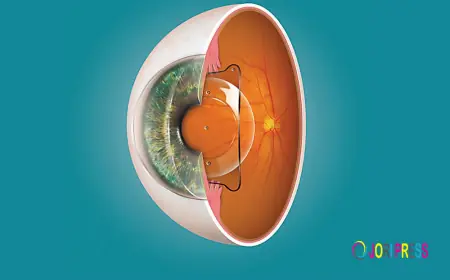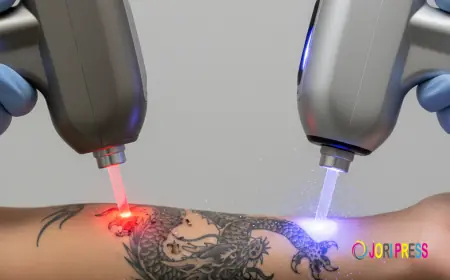Building Comprehensive Medical Timelines: Challenges and Solutions
Explore the complexities of building medical chronology and solutions with insights from product liability expert witness perspectives.

Constructing an accurate medical chronology is a pivotal element in many legal and clinical settings, particularly in cases involving product liability. Whether used by a product liability expert witness or healthcare professionals, these timelines encapsulate the sequence of medical events critical to understanding causation, treatment efficacy, and outcomes. Once or twice, the importance of precision in these timelines becomes glaringly apparent during litigation or clinical audits.
The Complexity of Medical Chronology in Legal Contexts
Understanding the Intricacies
A medical chronology is more than a simple timeline; it represents a structured narrative that synthesizes clinical data, diagnostic results, treatment interventions, and patient outcomes. In the realm of product liability, where causation and injury timelines must be meticulously correlated, building a comprehensive chronology can be fraught with difficulties. This is especially true when medical records are fragmented or incomplete.
Challenges in Data Collection
One of the foremost hurdles in constructing an exhaustive medical timeline is the heterogeneous nature of data sources. Patient records can exist in multiple formats, including handwritten notes, electronic health records (EHRs), and disparate specialist reports. Integrating these disparate data sets into a coherent medical chronology demands meticulous attention to detail and often necessitates advanced data management tools.
Key Obstacles in Building Medical Timelines
Inconsistencies in Medical Documentation
Variability in medical record-keeping practices presents significant challenges. Inconsistent terminology, missing dates, or ambiguous notations can undermine the timeline’s reliability. For a product liability expert witness, these inconsistencies complicate the ability to present a clear causative narrative, potentially weakening the evidentiary value of the medical chronology.
Data Gaps and Fragmentation
Incomplete documentation is another obstacle. Records may be missing crucial details due to patient transfers between facilities or lost data during administrative transitions. These gaps must be intelligently interpolated without conjecture, preserving the timeline’s integrity.
Complex Medical Histories
Patients with multifaceted health issues add layers of complexity. Chronic conditions, multiple interventions, and overlapping treatments require the timeline to distinguish causality carefully from correlation. Misinterpretation here can lead to flawed legal or clinical conclusions.
Solutions for Constructing Reliable Medical Chronologies
Leveraging Technology and Expert Collaboration
Modern electronic health record systems, when interoperable, can streamline data consolidation. Moreover, dedicated software designed to build medical chronology can automate date extraction, flag inconsistencies, and visualize events chronologically.
Collaboration with a product liability expert witness is often invaluable. These professionals bring specialized knowledge to interpret medical data within the context of legal standards, ensuring the timeline withstands scrutiny in court.
Standardizing Terminology and Formats
Adopting standardized medical lexicons and documentation templates reduces variability. Institutions implementing consistent documentation protocols make it easier to extract accurate timelines, thereby improving the utility of the medical chronology for both clinical and legal purposes.
Employing Forensic Medical Review
A forensic approach to reviewing medical records can identify subtle clues missed in routine assessments. This level of scrutiny aids in filling data gaps by correlating clinical findings with documented timelines, ultimately reinforcing the credibility of the chronology.
Best Practices in Timeline Construction
Prioritize Source Verification
Validating every entry against the original source documents ensures authenticity. Secondary sources or summaries should be used cautiously to avoid errors.
Maintain Chronological Precision
Dates should be verified rigorously, with attention to event sequences that might affect causation analyses. For example, distinguishing when a symptom first appeared versus when it was documented can be critical.
Contextualize Medical Events
Incorporate relevant clinical context to explain why certain treatments were administered or why diagnostic procedures occurred. This enriches the timeline, making it more than a mere list of dates.
The Role of the Product Liability Expert Witness
In litigation, the product liability expert witness often acts as a bridge between medical facts and legal standards. Their role in interpreting a medical chronology is crucial for demonstrating causation and injury progression linked to a product. They ensure that timelines are not just factually accurate but also legally coherent and persuasive.
Their expertise includes discerning the subtle nuances in medical data that could affect liability claims and advising legal teams on the significance of specific medical events in relation to the contested product.
Conclusion
Building a comprehensive medical chronology is a demanding yet essential task, especially in the domain of product liability. The challenges of inconsistent documentation, data fragmentation, and complex medical histories necessitate a multifaceted approach incorporating technology, standardized practices, forensic review, and expert interpretation.
Once a robust medical timeline is constructed, it becomes an indispensable tool for clinicians and legal professionals alike, providing clarity and substantiation in complex cases where precision can determine outcomes.
What's Your Reaction?
 Like
0
Like
0
 Dislike
0
Dislike
0
 Love
0
Love
0
 Funny
0
Funny
0
 Angry
0
Angry
0
 Sad
0
Sad
0
 Wow
0
Wow
0
















































